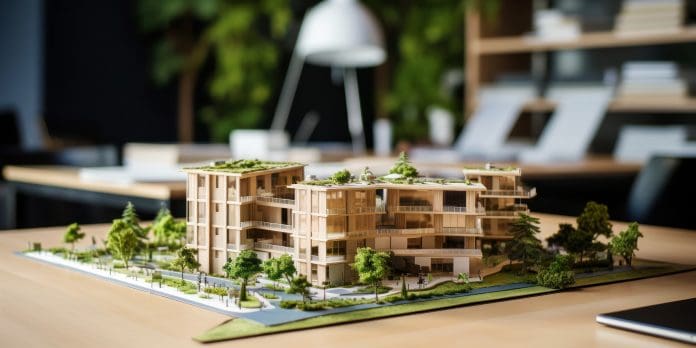Build Warranty explores how smart technology integration can embed better wellbeing in our built environment
In the ever-evolving landscape of construction and architecture, the intersection of sustainability and wellbeing has become a focal point.
Smart technology is proving to be a transformative force, offering a bridge between environmental consciousness and the creation of healthier, more comfortable built environments.
This article explores how the integration of intelligent technology and integrated monitoring is making it easier than ever to track energy use, adjust consumption, and contribute to the overall wellbeing in the housing sector.
The role of smart technology in sustainability
1. Energy efficiency through monitoring
Smart technology provides real-time data on energy consumption, allowing homeowners and building managers to monitor usage patterns. This level of insight enables informed decision-making, promoting energy-efficient practices and reducing the carbon footprint of residential buildings.
2. Renewable energy integration
Sustainable housing is closely linked to the use of renewable energy sources. Smart technologies seamlessly integrate with solar panels, wind turbines, and other renewable systems, optimising their performance and maximising energy production. This not only reduces reliance on traditional energy grids but also contributes to a more sustainable living environment.
3. Waste reduction and management
Intelligent monitoring extends beyond energy consumption to waste management. Smart systems can optimise waste collection schedules, encourage recycling practices, and minimise overall waste generation, aligning with the principles of sustainability and responsible resource management.
Enhancing wellbeing through intelligent design
1. Indoor air quality monitoring
Smart technology allows for continuous monitoring of indoor air quality. Integrated sensors can detect pollutants and allergens, triggering ventilation systems to maintain optimal air quality. This feature is particularly crucial for creating healthier living spaces, especially considering the amount of time individuals spend indoors.
2. Temperature and lighting control
Automated temperature and lighting control systems contribute to comfort and wellbeing. Smart thermostats adjust temperatures based on occupancy and preferences, ensuring an optimal environment. Similarly, intelligent lighting systems can mimic natural light patterns, positively influencing circadian rhythms and promoting better sleep quality.
3. Health tracking and integration
The integration of health-tracking devices into smart home systems adds another layer to wellbeing-focused design. From monitoring sleep patterns to encouraging physical activity, these technologies empower individuals to take a proactive approach to their health within the comfort of their homes.
Creating healthier and more comfortable homes
1. User-centric design:
The use of smart technology allows for user-centric design principles. Homes can be customised to individual preferences, from adjusting the height of kitchen counters to setting personalised lighting scenarios. This level of personalisation enhances comfort and promotes overall satisfaction with the living space.
2. Accessibility and inclusivity:
Smart technologies contribute to the creation of accessible and inclusive living environments. Automated door systems, voice-activated controls, and smart home features cater to individuals with varying levels of physical abilities, ensuring that homes are welcoming to everyone.
3. Long-term cost savings:
While the initial investment in smart technologies may seem significant, the long-term cost savings are considerable. Energy-efficient practices, reduced maintenance needs, and optimised resource consumption contribute to financial sustainability for homeowners and promote a more resilient housing sector.
The integration of smart technology in the housing sector represents a groundbreaking approach to sustainable and wellbeing-focused design. By leveraging intelligent monitoring for energy efficiency, waste reduction, and environmental responsibility, and incorporating user-centric features for comfort and health, the built environment can become a catalyst for improved living standards.
As the housing sector continues to embrace smart technologies, the vision of creating healthier, more comfortable, and sustainable homes is rapidly becoming a reality.

















